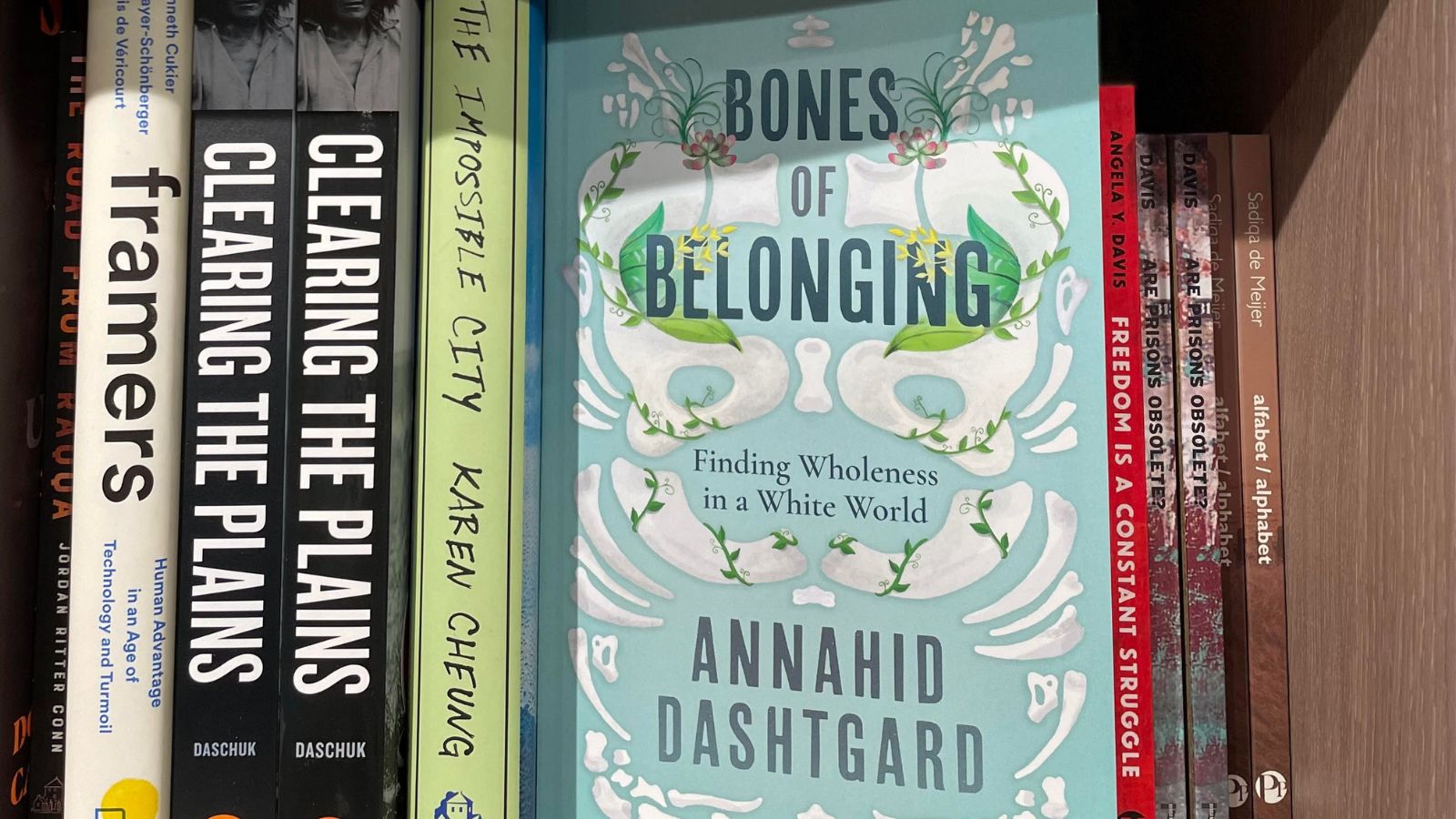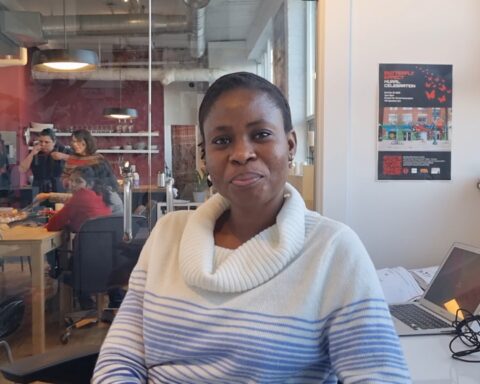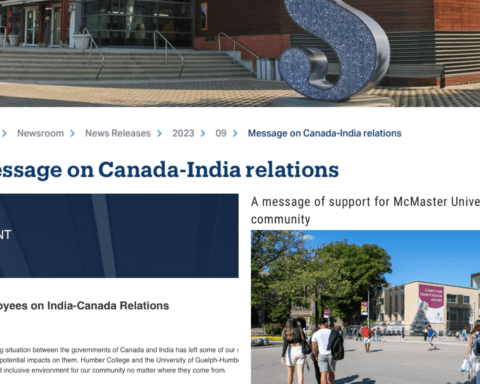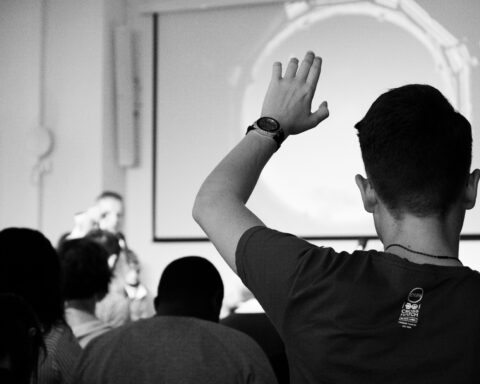In her book ‘Bones of Belonging: Finding Wholesomeness in a White World’, author Annahid Dashtgard dives into the complex and multifaceted nature of belonging, racial justice, and the intricate messiness of human existence.
Dashtgard, an Iranian-Canadian woman who fled her homeland, Iran, after the 1979 Revolution, unravels the complexities and nuances of navigating multiple cultural and societal spheres. Her book, which features a collection of poignant essays, explores the impact of systemic inequities and calls for a collective effort to dismantle oppressive systems.
Her efforts for raising these discussions has not been limited to this book. With a master’s degree in education and an undergraduate degree in psychology, Annahid is also the CEO and co-founder of Anima Leadership — a Toronto-based diversity and inclusion consulting company. Her previous book, ‘Breaking the Ocean’, addresses the long-term impacts of immigration, discrimination and racial trauma.
“I’m using story as a way of making accessible the experience of racism,” Dashtgard said. “The books of a country reflect the health of a democracy, and there’s a big gap between the health of the democracy that a lot of people believe we have and what is really the case.”
New Canadian Media caught up with Dashtgard to learn more about her process and experiences.
Note: The following Q&A interview has been edited and condensed for clarity and brevity.
What motivated you to write “Bones of Belonging” and explore the experiences of racialized immigrant women in Canada?
Well, I wanted to write the book that I did not see growing up, and I think book worlds are how we make meaning of our lives and experiences. I always did [that] through reading books by white authors, which was OK, but it didn’t help me make sense of parts of my life. I wanted to write from a perspective that I think is missing. I jokingly sometimes say that it’s the Brown version of ‘Eat, Pray, Love,’ the book that became famous by Elizabeth Gilbert.
Canada is a multicultural country, and Canadians like to talk a lot about how we’re so multicultural and accepting of our differences, except when you go to your local bookstore or library. You look at the voices that are getting published, and they’re still mostly by white people born in Canada. I think that’s a problem because our stories are reflective of who is visible in a nation, and who is visible means who’s opinion or who’s realities we take into account when we make decisions and pass laws and policies.
The books of a country reflect the health of a democracy, and there’s a big gap between the health of the democracy that a lot of people believe we have and what is really the case. So, I think it’s essential we have more stories reflective of the realities of many communities in Canada that are still not being represented.
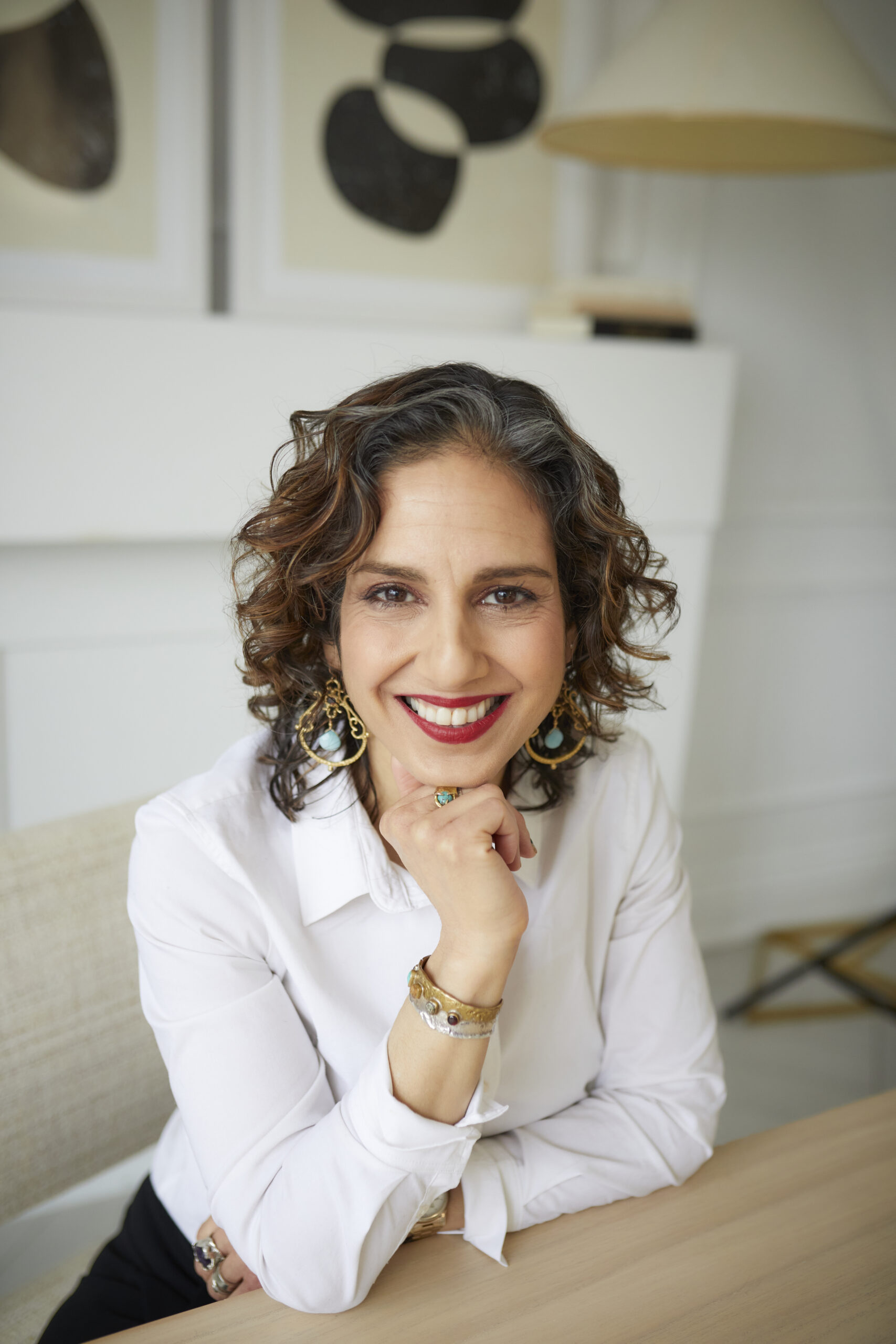
How did your personal experiences shape the content and direction of the book?
When I moved to Canada as a child, I was nine. I grew up with the myth that everything that was available to white Canadians born in Canada would be available to me, and that certainly wasn’t true. But I believed it because I had to, and there was always a struggle between what I believed and what was true.
I grew up thinking that I must be the problem and, as a lot of immigrants do, work[ed] harder and harder trying to simulate and change aspects of who I was, like my physical body. I’m proud to say I’m one of the few Persian women I know that did not have a nose job, which I’m so glad about as an adult. But I think it’s one of the things that, especially a lot of Persian women do because they think if they do, it’ll make them more acceptable and attractive.
I’m conscious of the code-switching thing of going into white environments where I lower my voice. I’m more polite, and I’m not as opinionated. I dropped a number of those things as an adult, but I can still feel the pressure of them.
It wasn’t until adulthood where I started to realize it’s not about me being the problem. The problem is that we still have a single version of what it means to be Canadian, a single version of what it means to be successful. The version of those stories is still written from the perspective of a white male, upper-class person. It has taken a lot of work throughout my adult life, from age 21 to now that I’m 50, to unlearn what I learned… from the perspective of feminism, anti-racism, and anti-oppression and to understand there are other stories. The impact of that story has harmed me, and I have harmed myself because I’ve been trying to live up to that. That unlearning has been the fuel to write my own story and stories.
A lot of the stories in this book are really about what it means to exist in the in-between. I exist in the in-between of being born in a foreign country but also being Canadian in so many ways. I’m Persian by birth but my father is Persian and my mother is British so there’s also cultural in-between. There is the reality of exile but also feeling home.
How can storytelling provide insight into the challenges of belonging in a society grappling with issues of race and whiteness?
Stories are the universal access point. As humans, our brains are wired to understand the world through stories in a way that statistics and facts and research do not provide. I see this every day in my work as a consultant and educator, teaching people about inclusion and anti-racism. I can go through a PowerPoint and go on and on about facts and the most up-to-date statistics, and I see people’s eyes start to glaze.
I tell one story from my own life or from what I’ve witnessed or experienced or seen in my work, and I watch people’s eyes light up, and the story reaches way deeper than anything else I might say in a two-hour session. It’s also how I learn, I can remember what happened in the book ten years later, whereas I barely remember what I learned in that webinar that I went through 10 years ago. It’s what sticks!
We’re in a time when this conversation about difference, especially racial difference, has become so polarized, and I think that’s a real problem. [It] is the first step towards increasing violence, and that’s what’s happening: verbal violence in the workplace, people stonewalling, passive-aggressively ignoring, and being violent to each other. Most folks living their lives are not going to pick up an academic book on anti-racism and educate themselves… but I think they will pick up a book like “Bones of Belonging.”
I’ve had a lot of feedback on this book already by people going, “I picked this book up, and it was really relatable.” So, I wrote a book that I hope is accessible, and I hope it acts as a bridge.

How do you envision the book impacting its readers, particularly those who may have had similar experiences or identities?
Oh, I love that question because the one thing I wanted more than anything else is for people to go, “I’m so glad you wrote this because I see myself in these stories.” There’s been a lot of messages like that. We people in these identities who are non-white, who are immigrants, who share identities that I talk about, have a hunger to be visible and see ourselves represented in the stories.
I’m just one voice. I think we need many more, and they’re starting to come, but it’s a very slow trickle. I think there’s a real hunger for people to see themselves represented, and that was my biggest hope and the biggest reception, which I’m grateful for.
Were there any challenges you faced while writing the book? How did you overcome them?
I see the biggest challenges at the beginning. I had an agent and I had feedback that the book didn’t fit neatly into one genre. The feedback I got was [that] it’s sort of a blend of nonfiction and also political analysis. I understood that the elements of race and immigration that I talked about are termed political. But for people that are in these identities, this is “everyday life.” What we term political is very much dependent on who is calling that out.
So I had to do a lot of fighting and advocating and educating in the early stages for why this book is needed, who it would reach, and why it’s important. I ended up firing my agent. I chose one of the few publishers that is a black man. When I reached out to him, he immediately sent me an email within five minutes saying [he would] publish this without even reading the whole thing because [he] had read my first book and said [he knew] that this will be important. His name is Kwame Scott Fraser, and he’s an amazing guy that’s done a lot at Dundurn Press in Toronto.
Could you elaborate on the term “Bones of Belonging” and its significance within the context of the book?
I would say that the truest stories are the ones that live in the bone, and when we speak those stories, they resonate. That’s the version that other people relate to and resonate with because they can feel its truth, but it’s the hardest one to dig for.
In one of the stories in the book, I talk about my own experience of making an assumption.I really wanted to expose different elements of what felt true. People can start to excavate their own skeletons.
The structure of the book came very early on, and I envisioned it as a human skeleton-like body. The larger essays are bigger bones in the body that form the bigger skeleton, and then the little in-between vignettes are like the smaller bones. I envision the book in a way that you could just read one limb, or you could read the whole thing and put it all together.
Have there been any surprising or particularly impactful reactions to the book?
We’re not at a time where a book like this is going to get a major plunk of money by Penguin Random House because it’s too “political.” It’s gone out for a Goodreads campaign and has been sent out to a group of influencers in the US, and the response has been wonderful.
What has surprised me is having conversations with people in the literary world, like festival organizers and independent booksellers, who I don’t think have a lot of vision, they tend to just go with the flow, and I’ve been surprised that a number of them have not heard of the book. That seems quite lazy and disappointing to me. In the Canadian publishing world, there’s a lot of talk about diversity, but I don’t think there’s as much action happening, and that’s been disappointing but not surprising. I’m now on the board of the Writers Union of Canada — I just joined — so I am going to put my efforts [into] what I’m talking about.
I was really proud of what the book became. It was listed on a Canadian bestseller list in its first week, and there’s been pieces published in Shadow Lane and the Walrus magazine and CBC books. So that has been wonderful. The disappointing element is when I walk into my local bookstore and they don’t have any copies available and I have to think, ‘What does it take, then, for a book to get noticed by you?’
A Vancouver B.C based journalist who writes about the Iranian community in Canada, art, culture and social media trends.

